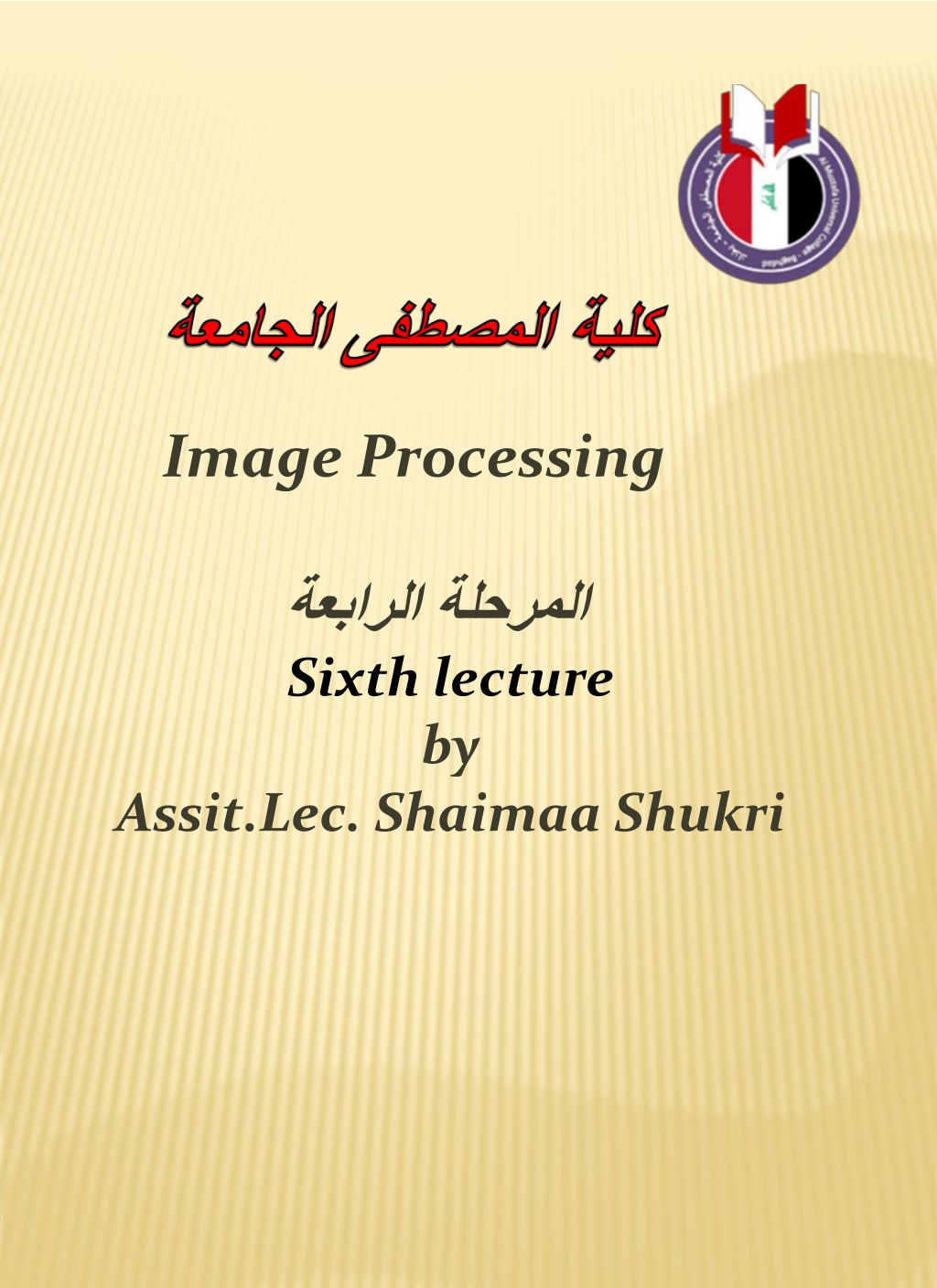
Advanced Image Processing Techniques for Noise Removal and Enhancement
Explore spatial filtering methods like mean and median filters for noise removal, edge detection with Sobel and Prewitt masks, and image enhancement using Gaussian filters. Understand the impact of convolution masks on image brightness and details to improve image quality.
Download Presentation

Please find below an Image/Link to download the presentation.
The content on the website is provided AS IS for your information and personal use only. It may not be sold, licensed, or shared on other websites without obtaining consent from the author. Download presentation by click this link. If you encounter any issues during the download, it is possible that the publisher has removed the file from their server.
E N D
Presentation Transcript
Image Processing Sixth lecture by Assit.Lec. Shaimaa Shukri
Chapter_Two ImageAnalysis Figure (2.12): Image Noise. Noise Removal using Spatial Filters: 2. Spatial filtering is typically done for: 1. Remove various types of noise in digital images. 2. Perform some type of image enhancement. [These filters are called spatial filter to distinguish them from frequency domain filter]. The three types of filters are: 1. Mean filters 22
Chapter_ Two ImageAnalysis 2. Median filters (order filter) 3. Enhancement filters Mean and median filters are used primarily to conceal or remove noise, although they may also be used for special applications. For instance, a mean filter adds softer look to an image. The enhancement filter high lights edges and details within the image. Spatial filters are implemented with convolution masks. Because convolution mask operation provides a result that is weighted sum of the values of a pixel and its neighbours, it is called a linear filter. Overall effects the convolution mask can be predicated based on the general pattern. For example: If the coefficients of the mask sum to one, the average brightness of the image will be retained. If the coefficients of the mask sum to zero, the average brightness will be lost and will return a dark image. If the coefficients of the mask are alternatively positive and negative, the mask is a filter that returns edge information only. If the coefficients of the mask are all positive, it is a filter that will blur the image. The mean filters, are essentially averaging filter. They operate on local groups of pixel called neighbourhoods and replace the centre pixel with an average of the pixels in this neighbourhood. This replacement is done with a convolution mask such as the following 3X3 mask Arithmetic mean filter smoothing or low-pass filter. 1 9 1 9 1 9 1 9 1 9 1 9 1 9 1 9 1 9 23
Chapter_ Two ImageAnalysis Note that the coefficient of this mask sum to one, so the image brightness will be retained, and the coefficients are all positive, so it will tend to blur the image. This type of mean filter smoothes out local variations within an image, so it essentially a low pass filter. So a low filter can be used to attenuate image noise that is composed primarily of high frequencies components. b. Mean filteredimage a. Original image Figure (2.13): Mean Filter. The median filter is a non linear filter (order filter). These filters are based on as specific type of image statistics called order statistics. Typically, these filters operate on small sub image, Window , and replace the centre pixel value (similar to the convolution process). Order statistics is a technique that arranges the entire pixel in sequential order, given an NXN window (W) the pixel values can be ordered from smallest to the largest. I1 I2 I3... <IN Where I1,I2, I3... , INare the intensity values of the subset of pixels in the image. 24
Chapter_Two ImageAnalysis Edge detect bySobel' horizontal mask Edge detect bySobel overall mask Original Image Edge detect by Prewitt mask Edge detect by Gaussian mask Figure (2-20) : Example of Edge Operators 43
